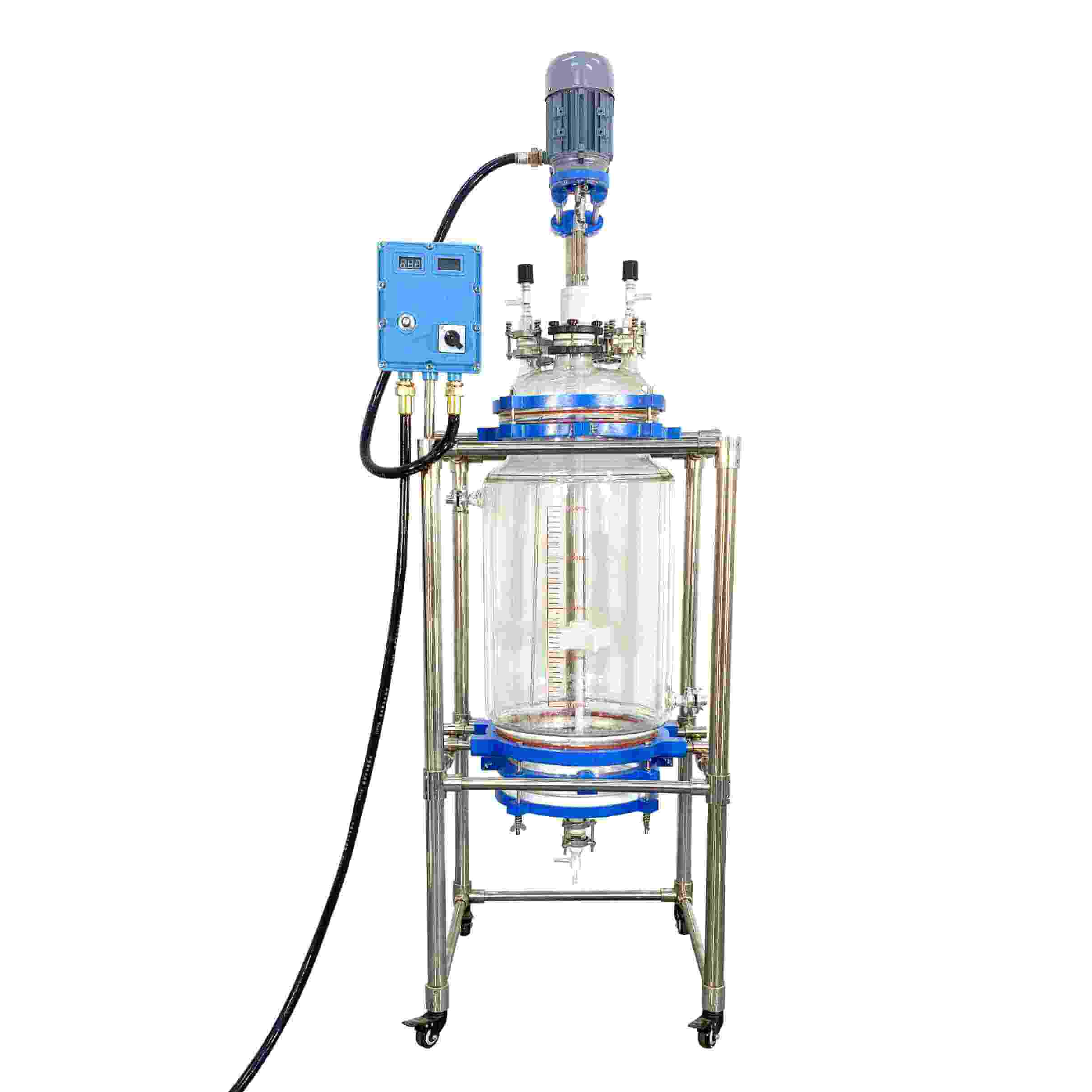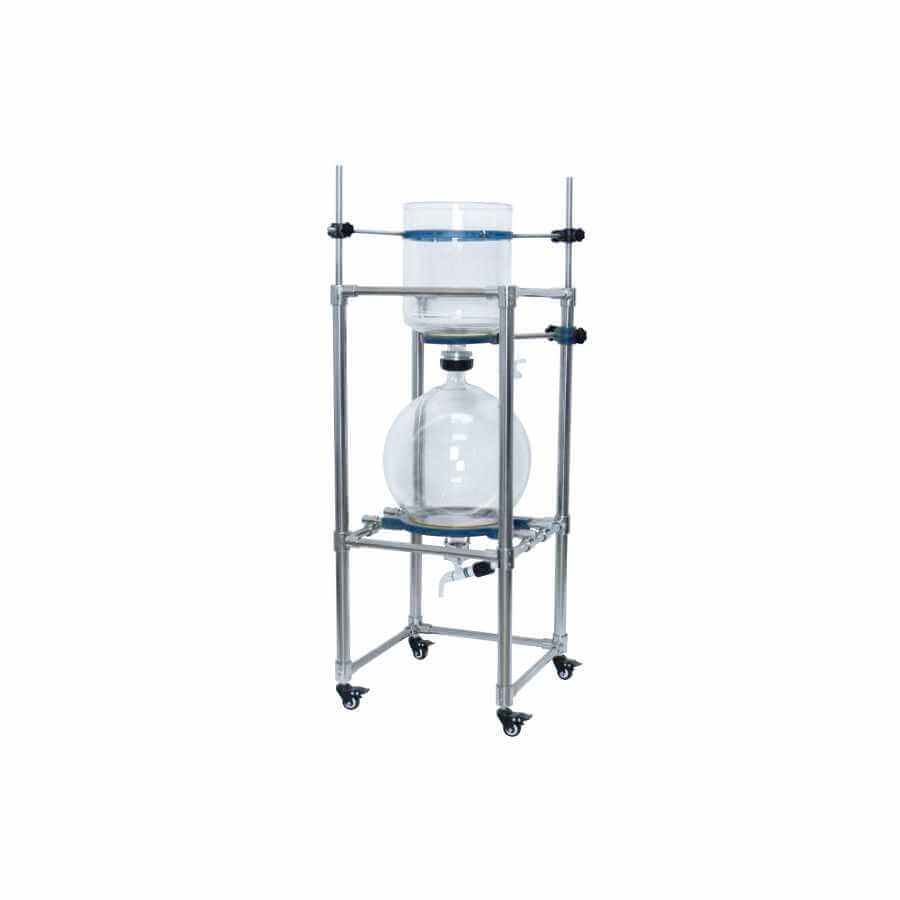

Glass Reactor
Glass reactors: used in chemical reactions, drug research and development, fine chemicals, food manufacturing, and other fields.
Material
glass
Capacity (L)
10-10000+
Mixing system
anchor, paddle, frame and others
Heating system
electric heating, oil heating and others
RUNGYU glass reactors are commonly used biochemical instruments and are widely used in modern fine chemicals, biopharmaceuticals, scientific research and experiments, and other industries. They can be used for concentration, distillation, reflux, separation, and purification reactions under the conditions of constant speed, constant force, and constant temperature. It is an ideal equipment for teaching, experiment, pilot test, and production.
Request a quoteThe glass reactor is mainly used for experiments such as material synthesis, distillation, and concentration. The structure of the kettle body is divided into three types: single-layer, double-layer, and three-layer. The kettle can be pumped to a negative pressure state as needed to meet the experimental conditions. The heating method of a single-layer glass reactor can choose three heating methods: oil-water bath heating, electric heating jacket heating, or flexible electric heating jacket heating.

The glass reactor controls the uniform dropwise addition of materials by adjusting the constant pressure funnel or the regulating valve on the feeding bottle. The reaction product is recovered by distillation using the heat exchange function of the condenser. The kettle body has two layers inside and outside. By injecting a certain temperature of circulating liquid into the interlayer, the temperature of the material in the kettle is adjusted. The three-layer speed-regulated glass reactor has two layers of glass jacket. The inner jacket is used to pass a certain temperature of circulating liquid to adjust the temperature of the material in the kettle. The outer jacket is pumped to a vacuum state with a vacuum pump to achieve the function of heat preservation.
The glass reactor structure is divided into desktop, floor-standing, stainless steel, lifting and rotating, explosion-proof, and can be customized according to needs.
The glass reactor includes a stainless steel frame, kettle body, kettle lid, motor, stirring paddle, controller, constant pressure funnel, condenser, condensate separator, circulating insulation hose, discharge valve insulation jacket, etc. (with observation window ).
The working principle and characteristics of glass reactor
The glass reactor mainly uses the characteristics of its double-layer glass to place the reaction materials (also called reaction solvents) in the interlayer of the equipment and stir it under normal pressure or negative pressure to enable the glass reactor to carry out chemical reactions. Inject constant-temperature (high or low-temperature) hot solution or coolant into its interlayer to heat or cool the materials in the glass reactor at constant temperature and provide stirring. In this way, the medium in the interlayer of the glass reactor (such as freezing liquid, heating water heating oil, etc.) is heated or cooled by stirring to perform a cyclic reaction. It is widely used as an ideal device in modern biochemical new material synthesis experiments.
Features of laboratory double-layer glass reactor
1. Stirring motor DC brushless motor
2. AC low-speed booster motor
3. Imported stirring seal, stirring paddle integrally formed tetrafluoro paddle, no leakage, no pollution
4. Anchor type, paddle type, frame type, multi-layer blade variable frequency speed regulation controller variable frequency step-less speed regulation
5. Double sealing technology
6. Manual lifting + electric lifting + sliding
7. Safety protection (delay, overcurrent, overheating protection, etc.)
8. Compact design, saving space
9. Split bath.
Glass reactor price
Of course, the prices of different glass reactor manufacturers are different. Due to the difference in raw materials, production costs, and technical costs, the factors affecting the price of equipment of different manufacturers are also different, and the pricing is also different. Therefore, users need to understand the technical strength and after-sales service of the manufacturer first. Re-determine the price.
Glass reactor supporting equipment
1. Refrigeration and heating integrated machine
2. Cryogenic Cooling Circulator
3. High-temperature heating circulator,
4. Circulating water vacuum pump/diaphragm vacuum pump




